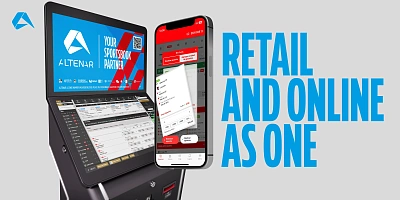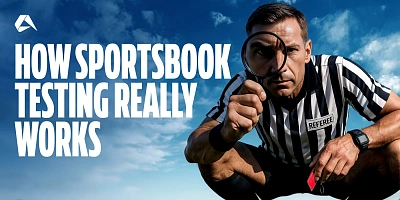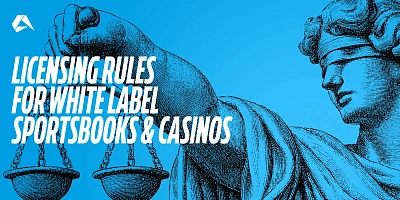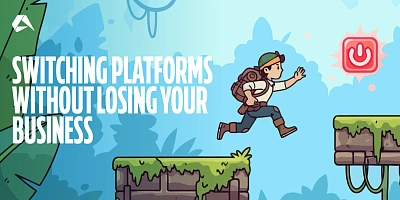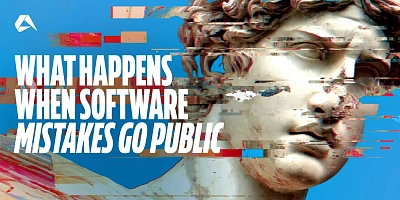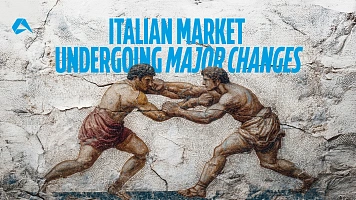So, you're thinking about launching an iGaming business. Perhaps it’s something you’ve been planning for years, or maybe the idea just started to take shape. Either way, it doesn’t usually take long before the big question comes to mind: what’s it really going to cost? And not just the tech. The whole thing. Platform, licensing, payments, marketing, staffing, all the moving parts that don’t show up in those ‘start your sportsbook today’ headlines.
That’s what this article is here to achieve. Because the truth is, there’s no one-size-fits-all number. Cost depends on how you build, where you launch, and how much of the operation you want to own outright. If you’re serious about building an iGaming business - whether it’s a sportsbook, online casino or both - this guide aspires to provide the clarity you’ve been looking for.
Three Paths to Market
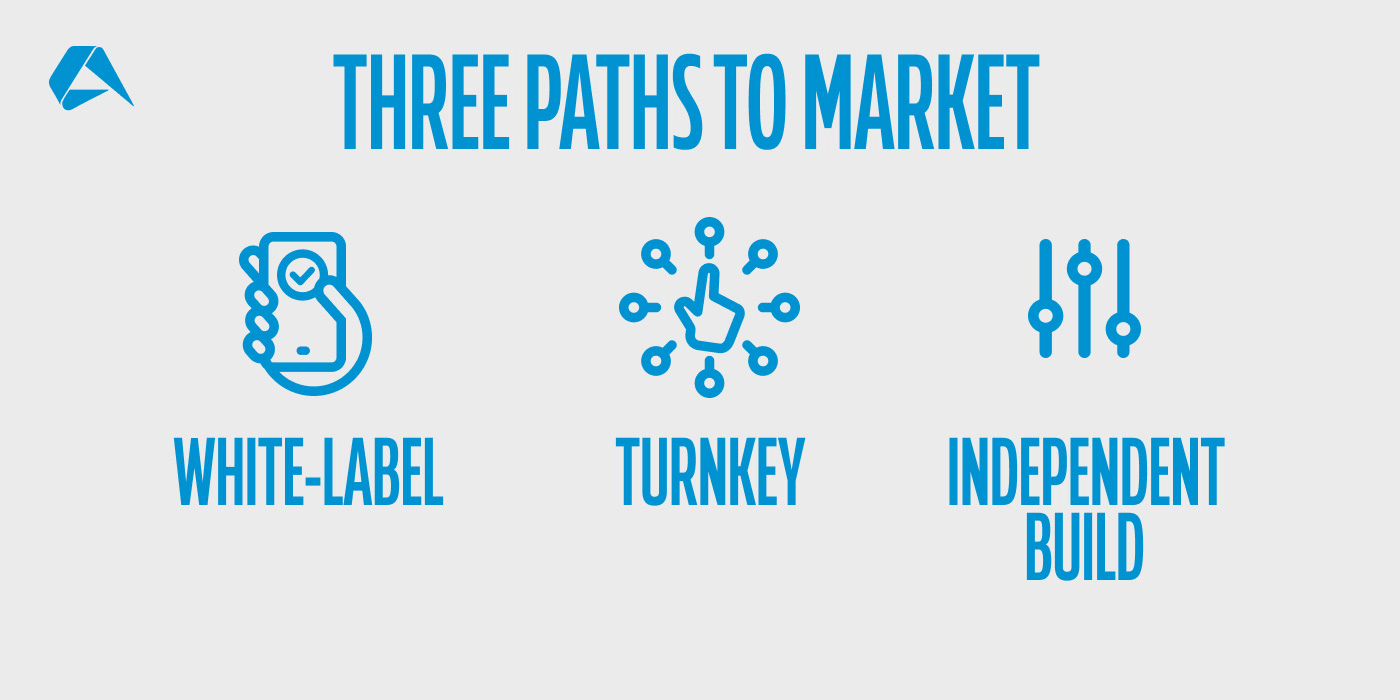
Operators and entrepreneurs entering the iGaming market have three distinct paths to launch: white label, turnkey, or full independent build. Each offers a different mix of speed, control, and cost. Choosing the right one is a must in today's business environment, as getting it wrong could cost you more than you think.
White-Label Solution
Lower Upfront Costs, but Less Control
For new market entrants, white-label platforms offer a practical route to launch with minimal friction. The provider supplies the core infrastructure in sportsbook markets, online casino games, licensing, payments, and tech support, enabling operators to focus on branding and customer acquisition. Time to market is short, and the initial investment is significantly lower than other models.
But that simplicity comes with limitations. Customisation is minimal, product control is limited, and the revenue-share model typically applied can erode long-term profitability. Operators are also dependent on the provider for platform updates, regulatory compliance, and content changes.
While launching a white-label iGaming business remains an efficient and accessible starting point, it’s best suited to those prioritising speed over control, or those seeking to validate a concept before committing to deeper investment.
Turnkey Platform Partnerships
Balancing Speed with Control
Turnkey solutions occupy a middle ground between white-label simplicity and the full autonomy of a self-build. Operators retain ownership of the brand and licence, but outsource much of the technical heavy lifting in platform infrastructure, game integrations, payments, and typically in ongoing support. This model appeals to those looking for more control without reinventing the wheel. It allows for tailored front-end development, greater influence over content strategy, and operational flexibility.
But with that flexibility comes greater responsibility. Compliance oversight shifts to the operator, as do hosting and risk protocols. Costs are higher than white label, and timelines are generally longer, but with that said, the trade-off is meaningful.
For serious operators with a clear vision, turnkey platforms offer a structured yet scalable route into the market.
Full Independent Build
Maximum Control, Maximum Commitment
Building an iGaming platform from the ground up offers unmatched control but requires significant capital, expertise, and long-term commitment. Every component, from the sportsbook engine to player wallets, back office, and CRM, must be developed, integrated, and maintained in-house or through bespoke partnerships. Operators must secure their own licensing, payment infrastructure, game content deals, and compliance systems, all while managing hosting, security, and technical support.
The upside is total ownership of the product and IP, with the freedom to innovate on your terms. But the risks are considerable. Timelines are long, overheads are steep, and oversights can be costly. This path is typically reserved for well-funded ventures with clear strategic intent, existing experience, and the stamina to see it through. The rewards for those who get it right can be substantial.
Cost Breakdown by Category
Launching a gaming business involves more than platform fees and licensing paperwork. Real costs emerge in tiers: infrastructure, payments, compliance, staffing, etc. Each is essential but potentially costly, especially when underestimated. Here’s a closer look at where the money goes.
Licensing and Legal
Think of the licence as your industry passport. Without it, you’re not just stuck at the border, you’re off the grid entirely. In this respect, the price tag attached to a licence is rarely the issue since it’s the access, trust, and operational stability that determine whether your model can scale and succeed.
Costs vary by jurisdiction. Malta, the Isle of Man, and Curaçao, for instance, each have different price tags, reputational weight, and compliance demands. Beyond licence fees, operators must also factor in legalities such as company formation, legal counsel, and ongoing reporting. It’s a non-negotiable foundation, generally expensive, but an even more costly one to get wrong.
Technology and Infrastructure
This is where everything starts to take shape and costs quietly stack up. Platform architecture, game APIs, payment routing, wallet systems, CMS, back office, player management, hosting, and uptime protections all fall under this layer. Even with a third-party provider, the level of customisation, scalability, and resilience required adds cost and complexity.
Those building in-house face heavier upfront spend, but even plug-and-play setups demand real investment in stability. Go too lean, and you’ll feel it later with bottlenecks in load times, system failures during peak traffic, and limited flexibility when your strategy changes. Infrastructure rarely wins awards or headlines, but it's the foundation that supports performance, trust, and long-term growth.
Payment Systems and KYC
Getting paid and staying compliant while doing it is rarely as straightforward as it sounds. PSP integrations, settlement flows, FX handling, chargeback protection, and fraud tools all come with technical and financial overheads. The same goes for KYC. Whether automated or manual, onboarding systems must meet local regulatory standards, protect against AML breaches, and deliver a user experience that doesn’t scare off legitimate players.
Operators entering regulated markets face rising expectations around source-of-funds checks, affordability screening, and secure data storage. These generally aren’t optional extras, and they’re not cheap. Providers charge integration fees, percentage-based transaction costs, and in some cases, monthly minimums. Negotiate well, but budget seriously. Weaknesses in this area can include closed accounts, stalled growth, or worse.
Marketing and Customer Acquisition
No matter how strong the platform, players don’t arrive by accident. Acquisition is one of the biggest, and sometimes one of the most volatile, expenses in an iGaming operation. Paid search, affiliate deals, influencer campaigns, bonus strategies, and media efforts all require capital up front, usually before any revenue return. Affiliates alone may take 25–40% of player lifetime value.
Then there’s customer retention to think about. CRM platforms, loyalty tools, and reactivation flows all carry subscription or development costs. Operators must also factor in localised content, translation, and regulatory marketing restrictions, especially in tier-one jurisdictions. Getting noticed in a crowded market isn’t cheap, but failing to budget appropriately for it can be fatal.
Compliance and Risk Management
Regulated markets in the gambling industry offer minimal leeway for delayed compliance. It’s a live operational function with real commercial weight. From day one, operators must maintain audit-ready systems: real-time reporting, AML controls, safer gambling tools, data privacy measures, and jurisdiction-specific disclosures. That all adds up to upfront investment in technology and ongoing costs tied to monitoring, internal processes, and qualified staff.
Risk management layers on top of this to include fraud prevention, transaction screening, betting pattern analysis, and source-of-funds checks. These aren’t abstract obligations. In a nutshell, they shape how regulators assess your licence, how payment partners rate your risk profile, and how long your operation survives under scrutiny.
Staffing Costs
However modern the platform or automated the process, people are still needed to carry out operations. From compliance officers and trading analysts to marketing managers, affiliate leads, and 24/7 customer support, the payroll builds quickly. Operators need qualified professionals across multiple departments, often with language capabilities, regulatory expertise, and industry-specific knowledge. That’s before factoring in C-suite leadership, legal advisors, and tech support.
In this respect, even lean setups demand a core team to keep the lights on and the business licence in good standing. For those building independently, staffing often becomes the single largest recurring cost. And in regulated markets, understaffing key functions is risky and can put the licence itself in jeopardy. Salaries may not show on the launch invoice, but they shape sustainability and profitability from day one.
Sample Budget Scenarios (Year 1)
The cost of launching an iGaming business in 2025 hinges less on ambition and more on how that ambition is structured. A white-label project can be launched for a fraction of what a proprietary build demands, but that lower price comes with limits on control, scalability, and ownership. At the other end of the scale, an entirely independent build gives operators total autonomy, but pushes capital requirements into six or even seven figures. Between those extremes, turnkey partnerships offer a balance of customisation and speed, with wide variations depending on licensing, product mix, data access, and marketing scope.
Ultimately, cost isn’t just a question of technology. It is also shaped by geography, verticals, and the size of the budget you're willing to commit up front.
Here’s a breakdown of what each route typically requires in year one:
Summary of Estimated Year One Investment Costs
| Route to Market | Estimated Year 1 Cost | What This Typically Covers |
|---|---|---|
| White-Label Startup | $100,000 – $250,000 | Platform access, basic game selection, licensing via provider, hosted infrastructure, integrated payment systems, basic branding and support. |
| Turnkey Launch | $500,000 – $2,000,000 | Branded front end, platform licence, game and sportsbook integrations, payment processing, B2C licence costs, legal setup, initial staffing, marketing, CRM tools. |
| Independent Build | $2,500,000 – $10,000,000+ | Full platform development, PAM, sportsbook engine or casino aggregator, payment and data feed deals, proprietary tech, in-house staffing, compliance, marketing, and licensing. |
White-Label Startup
Estimated range: $100K–$250K
Ideal for: Small-scale or affiliate-backed entrants
Most of the budget here goes to platform fees, predefined game and betting market bundles, infrastructure hosting, and licensing under the provider’s regulatory umbrella. It’s a stripped-down launch model, which is typically efficient, but tightly boxed in. There’s rarely room for bespoke tech or broad supplier deals, and marketing budgets are often squeezed to fit.
This option is less about building a long-term brand and more about acquiring early traffic, testing conversions, and proving a concept without burning through capital. It works, but only when expectations align with limitations.
Turnkey Launch
Estimated range: $500K–$2M
Ideal for: Ambitious operators with a long-term plan and a defined brand.
At this level, investors are doing more than launching. They’re building a business with infrastructure that can grow with the company. A significant portion of the budget goes to platform licensing, game aggregation deals or betting content services (odds and data feeds), payment integrations, and a branded front end tailored to your market.
Operators need to secure their own licence, cover initial legal and corporate costs, and fund the first wave of marketing. Staffing begins here, too, since compliance, support, and customer acquisition can't be outsourced forever. It's a bigger commitment, but the payoff is meaningful with more control, more margin, and a more straightforward path to scaling or exiting on your own terms.
Independent Build
Estimated range: $2.5M–$10M+
Ideal for: Well-funded operators seeking full control and long-term value.
This route is as demanding as it is strategic. Budgets at this level cover full platform development, from front end to odds engine, player account management, and sportsbook or casino infrastructure built in-house or through bespoke vendors. Add in licensing, proprietary data feed agreements, trading tools, and a team of developers, risk managers, compliance officers, and customer support, and the costs can escalate fast. It's a longer launch cycle, but the end result is total ownership. No rev-share, no third-party roadmaps, no limits on scale. This route is about building an asset with real equity, ready to licence, sell, or expand across jurisdictions.
Strategies To Reduce Costs
What catches most new operators off guard isn’t the upfront spend, it’s generally how quickly costs spiral when early-stage planning falls short. For those starting with a white-label model, however, upfront costs are often more predictable, and in some cases, negotiable. Experienced providers may offer tiered pricing, performance-linked fees, or launch support that helps preserve capital during those all-important first few months.
For others, licensing delays are a common trap. Applying in multiple jurisdictions at once might look ambitious, but staggered applications are often more practical. Each regulator moves at their own pace, and until approval lands, you’re still paying staff, infrastructure, and legal fees without any revenue. Better to start where you’re most likely to get to market fastest, and build outward from there.
Experienced operators often find savings in what they don’t try to own outright. Outsourcing non-core functions, like customer support, risk monitoring, or affiliate management, to specialised partners can reduce payroll pressure and improve operational flexibility. Many also avoid overcommitting to fixed infrastructure too early, opting instead for modular platform deals with scalable costs tied to performance. The key is knowing where control adds value, and where it quietly drains budget without moving the business forward. To this extent, efficiency often lies in restraint.
Customisation is another budget drainer. It’s tempting to build out every feature you’ve imagined, but that early enthusiasm can blow your timeline and your budget. An MVP approach (Minimum Viable Product), which is lean, focused, and functional, lets you launch faster, test performance, and reinvest intelligently based on real-world data.
Payment processing is another area that is rarely cheap, but the most significant costs often come from poor planning. Many PSPs view new operators as high risk, so approval takes time, and chargeback issues only make things worse. Talk to providers early, tighten your fraud controls, and build a transparent track record from day one.
Finally, don’t underestimate churn. A healthy player database doesn’t just happen overnight. It’s built through thoughtful CRM, retention tools, and consistent reactivation. Skip this, and you’ll pay double to replace the players you could have kept.
Smart Cost Reduction Strategies in 2025
Cost control in iGaming is less about cutting corners and more about spending with directed intent. Thus, the most successful operators in 2025 are likely to structure their businesses to stay lean without limiting growth.
Here’s how experienced teams are keeping overheads in check without compromising performance.
Key cost strategies include:
-
Modular, scalable tech stacks
-
Shared service centres for compliance
-
AI-powered operational automation
-
Strategic outsourcing
-
Payment innovation
-
Smarter CRM and retention systems
Modular, Scalable Tech Stacks
Rather than buying into full-suite solutions up front, smart operators are opting for modular systems that let them build only what they need and upgrade as they grow. This reduces unnecessary licensing fees, lowers integration costs, and provides the flexibility to adapt their tech to the market instead of locking themselves into rigid, pre-packed systems from day one.
Shared Service Centres for Compliance
Compliance demands scale with market expansion, but cost doesn’t have to. Many operators now centralise legal, regulatory, and KYC functions across brands and jurisdictions. By consolidating teams and tooling in shared service centres, they reduce duplication, increase process efficiency, and stay audit-ready without inflating headcount in every market they enter.
AI-Powered Operational Automation
Advanced operators are starting to use AI to tackle repetitive tasks that drain human resources in bandwidth—fraud detection, basic customer queries, and even bet verification. These amount to trained systems improving accuracy while keeping payroll lean. With the proper oversight, automation reduces labour costs, improves response times and mitigates risk.
Strategic Outsourcing Where It Makes Sense
Not everything needs to be built or run in-house. Many operators are now outsourcing affiliate management, customer support, and specific trading functions to trusted partners, not to save money at any cost, but to redirect internal focus towards strategy, growth, and regulatory compliance.
Payment Innovation
Costs add up quickly in the payments stack. In 2025, some operators are adopting lower-cost alternatives to card networks, such as account-to-account (A2A) transfers and localised instant payment solutions. These reduce transaction fees and settlement barriers. Some are even experimenting with liquidity models, using player staking or reward systems to improve cash flow management during peak payout cycles.
Smarter CRM and Retention Tools
Acquisition is expensive. Keeping players, on the other hand, is cheaper, but only if the retention system works. AI-powered CRM platforms now track player behaviour in real time, adapting offers, content, and outreach based on individual activity. The result? Better segmentation, higher loyalty, and reduced churn. It’s a meaningful shift from static campaigns to responsive, behaviour-led retention.
It’s worth noting that the cost reduction strategies above aren’t just tactics; they’re signs of a more disciplined, forward-thinking approach to iGaming operations. The operators who last aren’t always the ones who spend the most. They’re the ones who spend with purpose, build with flexibility, and know when efficiency matters more than scale.
Build vs Buy? Choosing the Path for Growth

Before deciding whether to build or buy, it’s worth asking a more fundamental question: Are you in the business of product development, or are you in the business of acquisition, retention, and growth? Because the difference will shape everything from your timeline to your exit plan.
Building from scratch gives you complete control over the project roadmap, IP, and innovation cycles. For some, that control is essential. It allows for unique feature sets, tailored UX, and long-term value tied to proprietary tech. But it also pulls your focus into the mechanics of infrastructure, hiring dev teams, maintaining compliance, and managing endless integrations, instead of acquiring players and growing revenue.
Buying or licensing, on the other hand, is faster and cleaner. But smart operators rarely treat it as all or nothing. The emerging model is trending towards being more modular. That’s to say, licensing the infrastructure but owning the player experience. It’s a strategic compromise that lets you hold the keys to UX, CRM, and branding without carrying the weight of back-end complexity.
There’s also the question of technical debt to consider. Custom platforms are rarely perfect on first release, and maintaining them requires long-term resource commitments that can slow development cycles. Meanwhile, licensed platforms absorb those infrastructure burdens for you, letting your team focus on high-impact areas that differentiate your brand.
Still, full ownership has its place. Some operators are building proprietary platforms for internal use and future B2B licensing, some even for strategic exit opportunities. There’s no right answer, only the right architecture for your goals. With that said, however, most operators don’t need to reinvent the infrastructure. They need the freedom to shape what sits on top of it. And for a good number of operators, the smarter move is often to build on what already works.
Altenar offers a scalable, licensed foundation that supports both approaches: full-stack delivery or modular integration. Whether you’re testing a concept or building for acquisition, we’re positioned to support your next move.
Ready to schedule a personalised demonstration to explore what that could look like?
Let’s Price the Right Approach for Your iGaming Project
Our expert team can walk you through the options, from modular builds to full platform delivery, and provide a clear, tailored evaluation of what launching your iGaming business in 2025 would actually cost. No estimates, no guesswork, just informed guidance based on your goals, markets, and operational priorities.
Send our expert team a message, and let’s start the conversation today.
Disclaimer
This information is not intended to be legal advice and is solely extracted from open sources. It should not be relied upon as a substitute for professional legal advice, and Altenar does not accept any liability for its use.





